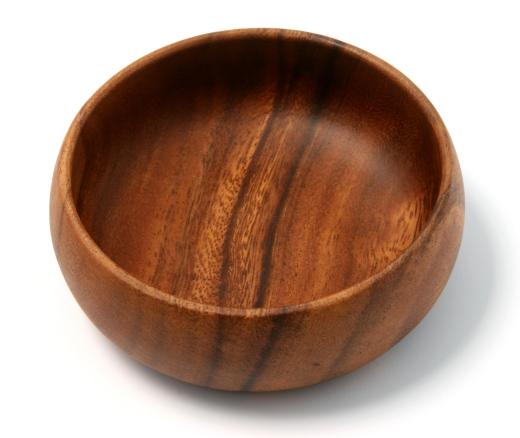Among the myriad tools available to create decorative or functional products is a tool called a lathe, which spins material at a controlled speed so that a latheworker can press a sharp tool against the material to shape it. A woodworking lathe is a lathe specifically designed to handle various types of wood, as opposed to a metal lathe which handles exclusively metal, or a glassworking lathe, which functions in an entirely different manner than other types of lathes. The woodworking lathe is the oldest type of lathe, supposedly dating back to ancient Egypt--in a non-motorized version, of course.
The woodworking lathe is a unique woodworking tool because unlike many other woodworking processes, the wood spins while the tool remains mostly stationary. The woodworking lathe may come in a variety of styles and sizes, but most lathes are either smaller tabletop lathes, or larger freestanding lathes with their own legs that can be bolted to the floor. A piece of wood is attached to a rotating spindle at the headstock of the lathe, and secured at the other end to a tailstock or tailpiece. The rotating spindle of the woodworking lathe is then turned either by a motor or by a non-motorized foot pedal, which then in turn rotates the piece of wood.

A tool rest is attached to the base--or bed--of the lathe and runs parallel to the spinning wood. The tool rest gives the user a solid, steady surface on which to place a hand-held chisel or other cutting tool. This tool rest prevents the cutting tool from moving too much or skipping out of the woodworker's hand, thus allowing stability and accurate cuts. Holding sandpaper to the still-spinning piece of wood is not uncommon and allows the woodworker to remove small debris and unfinished edges from cuts. This technique can be dangerous and should be reserved for professionals only.
In general, there are two types of woodworking lathe turning: faceplate turning and spindle turning. Spindle turning involves setting a long piece of wood between two spindles on the headstock and tailstock, as mentioned above. The end result is long and tubular, like a table leg. Faceplate turning involves fixing the wood to one faceplate, which is then attached to a spindle on the headstock of the woodworking lathe, which allows the woodworker to create a product that is shorter and wider than spindle-turned wood. Wooden bowls are often faceplate turned.
